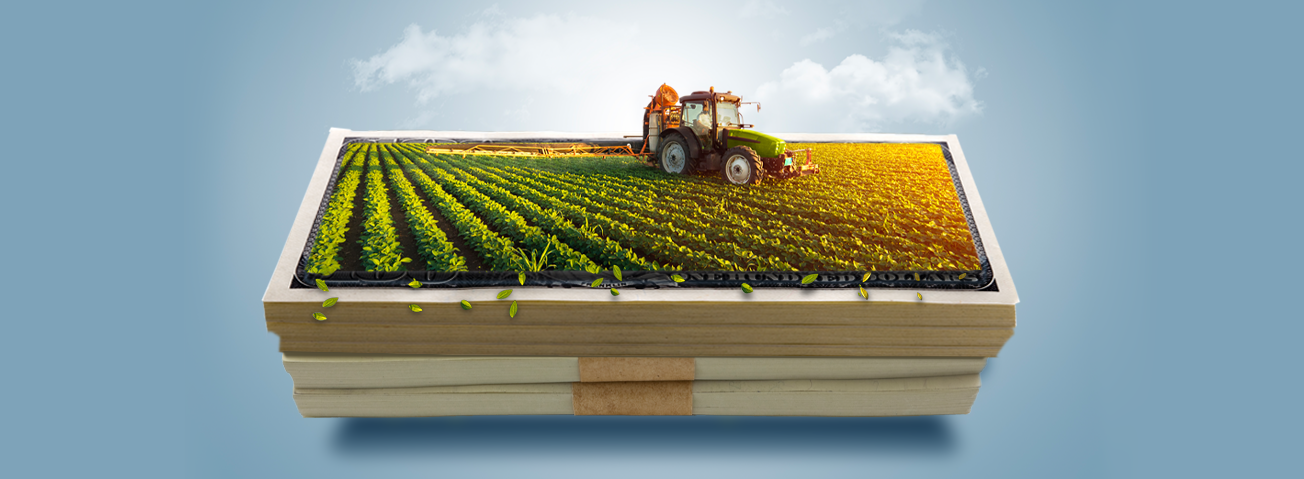
Commercial Farms Led in Government Payments in 2021
- by Dipak Subedi, Anil K. Giri and Monika Ghimire
- 5/15/2023
In 2021, more than 34 percent of U.S. farm households received Government payments. Totaling $14.3 billion, these payments went to farms of three types. About 75 percent of commercial farms—those with $350,000 or more in gross cash farm income (GCFI), as defined by USDA, Economic Research Service — received Government payments. For intermediate farms—defined as those with less than $350,000 in GCFI and a principal operator whose primary occupation is farming—31 percent received Government payments. Finally, Government payments went to 29 percent of residence farms, those with less than $350,000 in GCFI and where the principal operator is retired from farming or has a primary occupation other than farming. Among the farm households that received Government payments, commercial farms received an average $66,314 in Government payments in 2021 (the most recent year for which data are available); intermediate farms received an average $12,794 in payments, and the average Government payments for residence farms was $8,354.
Government payments are made broadly under four types of programs:
Countercyclical. Countercyclical programs include the Price Loss Coverage (PLC) and Agricultural Risk Coverage (ARC) programs, and payments are based on historical production of program crops, but the payment rates depend on market prices.
Marketing loan. Marketing loan programs include the Loan Deficiency Program (LDP), marketing loan gains (MLG) and certificate exchange gains. Marketing loan programs are based on current production and tend to provide payments when market prices fall below target levels.
Conservation. Conservation program payments are made to producers that participate in USDA’s Conservation Reserve Program (CRP), Environmental Quality Incentive Program (EQIP), Conservation Stewardship Program (CSP), or other conservation programs such as the Regional Conservation Partnership Program (RCPP) and Agricultural Conservation Easement (ACE). CRP requires that agricultural production not occur on enrolled land and that producers maintain or adopt resource conservation practices to receive payments. In contrast, EQIP and CSP are working-lands programs.
Other Government programs. These include ad hoc plans such as those created during the Coronavirus (COVID-19) pandemic, including the Coronavirus Food Assistance Program (CFAP) and forgiven loan amounts from the Small Business Administration’s Paycheck Protection Program (PPP).
In 2021, average Government payments from all categories were largest for commercial farms. Payments to intermediate farms followed in all categories except for conservation. For example, commercial farms received an average $24,165 in countercyclical payments, compared with $3,583 for intermediate farms and $2,483 for residence farms. Average conservation payments were highest for commercial farms at $17,673, compared with $6,821 and $6,865 for intermediate farms and residence farms, respectively.
| Average Government payments to farm operator households | ||||
|---|---|---|---|---|
| Countercyclical | Marketing loans | Conservation | Other | |
| Major programs included | PLC, ARC | LDP, MLG | EQIP, CSP, CRP | CFAP, PPP, disaster, other emergency programs |
| Average payment in 2021 (in dollars) | ||||
| Commercial | 24,165 | 31,209 | 17,673 | 53,751 |
| Intermediate | 3,583 | 8,439 | 6,821 | 12,882 |
| Residence | 2,483 | 5,095 | 6,865 | 8,358 |
| Note: PLC = Price Loss Coverage. ARC = Agricultural Risk Coverage. LDP = Loan Deficiency Program. MLG = marketing loan gains. EQIP = Environmental Quality Incentive Program. CSP = Conservation Stewardship Program. CRP = Conservation Reserve Program. CFAP = Coronavirus Food Assistance Program. PPP = Paycheck Protection Program. Commercial farms are those with gross cash farm income (GCFI) of $350,000 or more. Intermediate farms are those with GCFI of less than $350,000 and a principal operator whose primary occupation is farming. Residence farms are those with GCFI of less than $350,000 and where the principal operator is retired from farming or has a primary occupation other than farming. Source: USDA, Economic Research Service (ERS) analysis of data from ERS and USDA, National Agricultural Statistics Service, 2021 Agricultural Resource Management Survey. |
||||
This article is drawn from:
- ARMS Farm Financial and Crop Production Practices. (n.d.). U.S. Department of Agriculture, Economic Research Service.
You may also like:
- Key, N. (2019, October 22). Larger Farms and Younger Farmers Are More Vulnerable to Financial Stress. Amber Waves, U.S. Department of Agriculture, Economic Research Service.
- Farm Income and Wealth Statistics. (n.d.). U.S. Department of Agriculture, Economic Research Service.
- Conservation Programs. (n.d.). U.S. Department of Agriculture, Economic Research Service.
- Subedi, D., Giri, A.K. & McDonald, T.M. (2021, July 6). Commercial Farms Received the Most Government Payments in 2019. Amber Waves, U.S. Department of Agriculture, Economic Research Service.
- Farm Sector Income & Finances. (n.d.). U.S. Department of Agriculture, Economic Research Service.
- Farm Household Well-being. (n.d.). U.S. Department of Agriculture, Economic Research Service.
- Farm Household Income and Characteristics. (n.d.). U.S. Department of Agriculture, Economic Research Service.
- Whitt, C., Miller, N. & Olver, R. (2022). America’s Farms and Ranches at a Glance: 2022 Edition. U.S. Department of Agriculture, Economic Research Service. EIB-247.
- McFadden, J. & Hoppe, R.A. (2017). The Evolving Distribution of Payments From Commodity, Conservation, and Federal Crop Insurance Programs. U.S. Department of Agriculture, Economic Research Service. EIB-184.
- Litkowski, C. & Law, J. (2021). COVID-19 Working Paper: A Timely Tool for Evaluating Financial Conditions in Agriculture: USDA Forecasts of the Value of Production in the Face of COVID-19. U.S. Department of Agriculture, Economic Research Service. AP-086.

